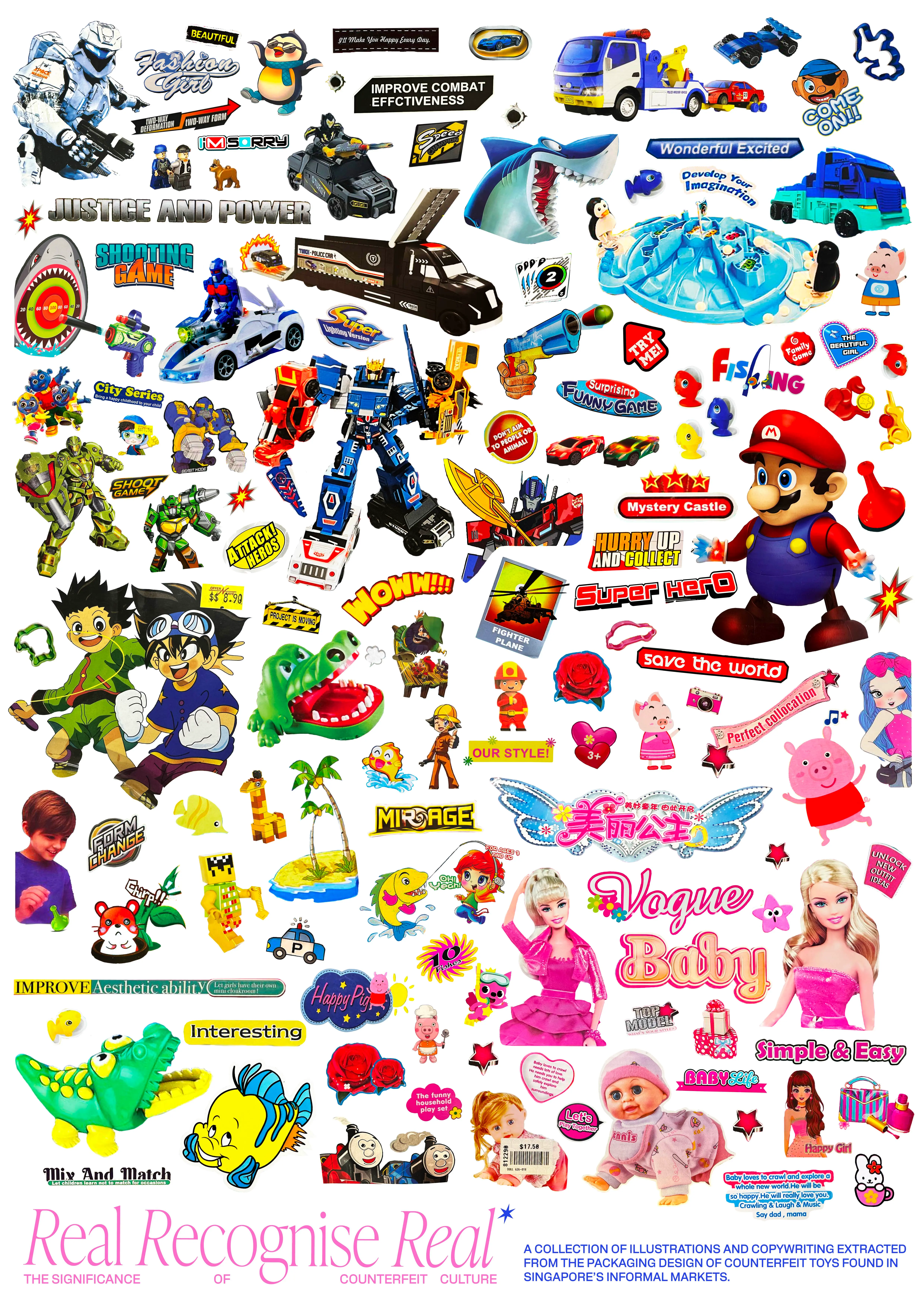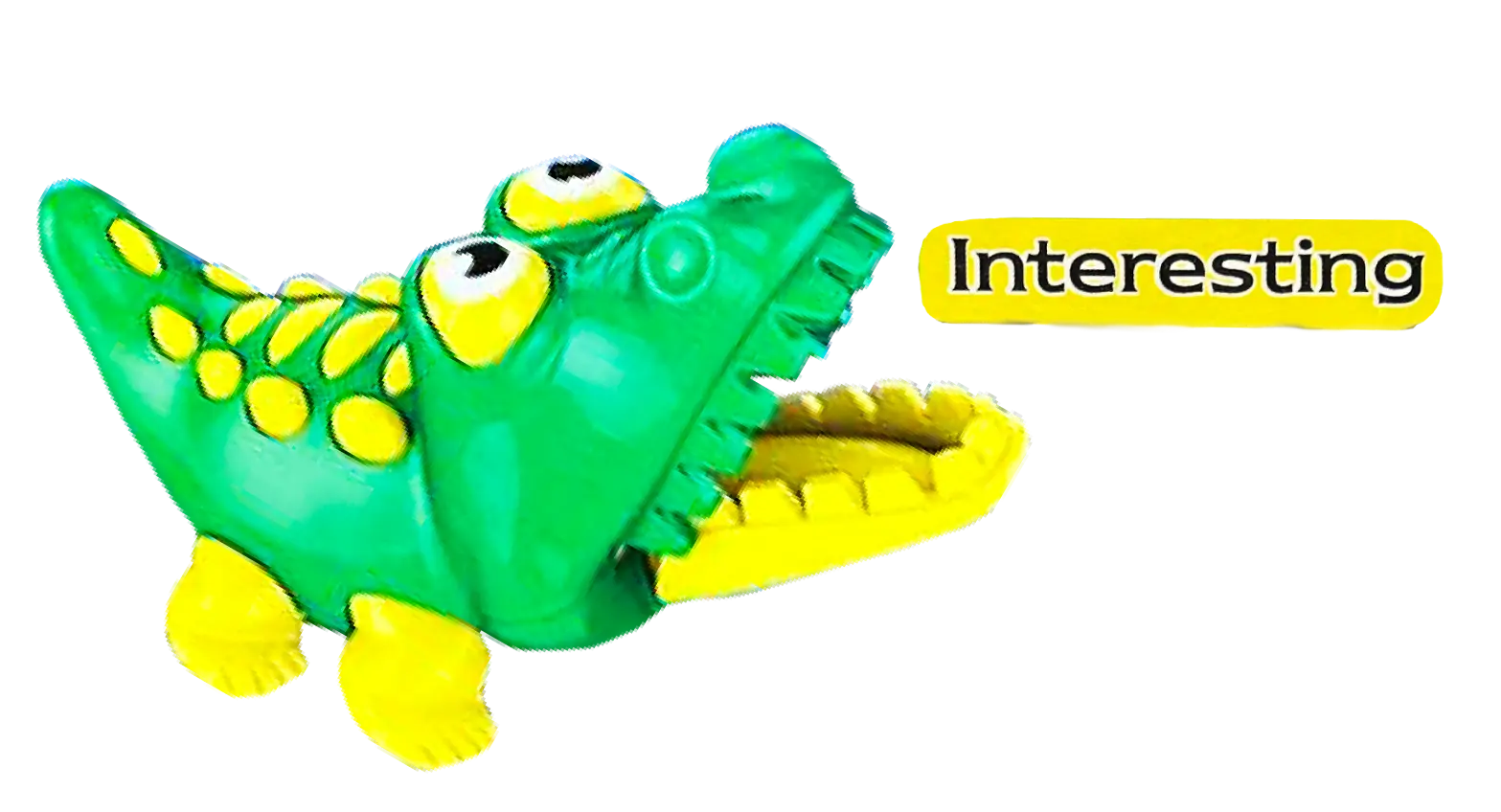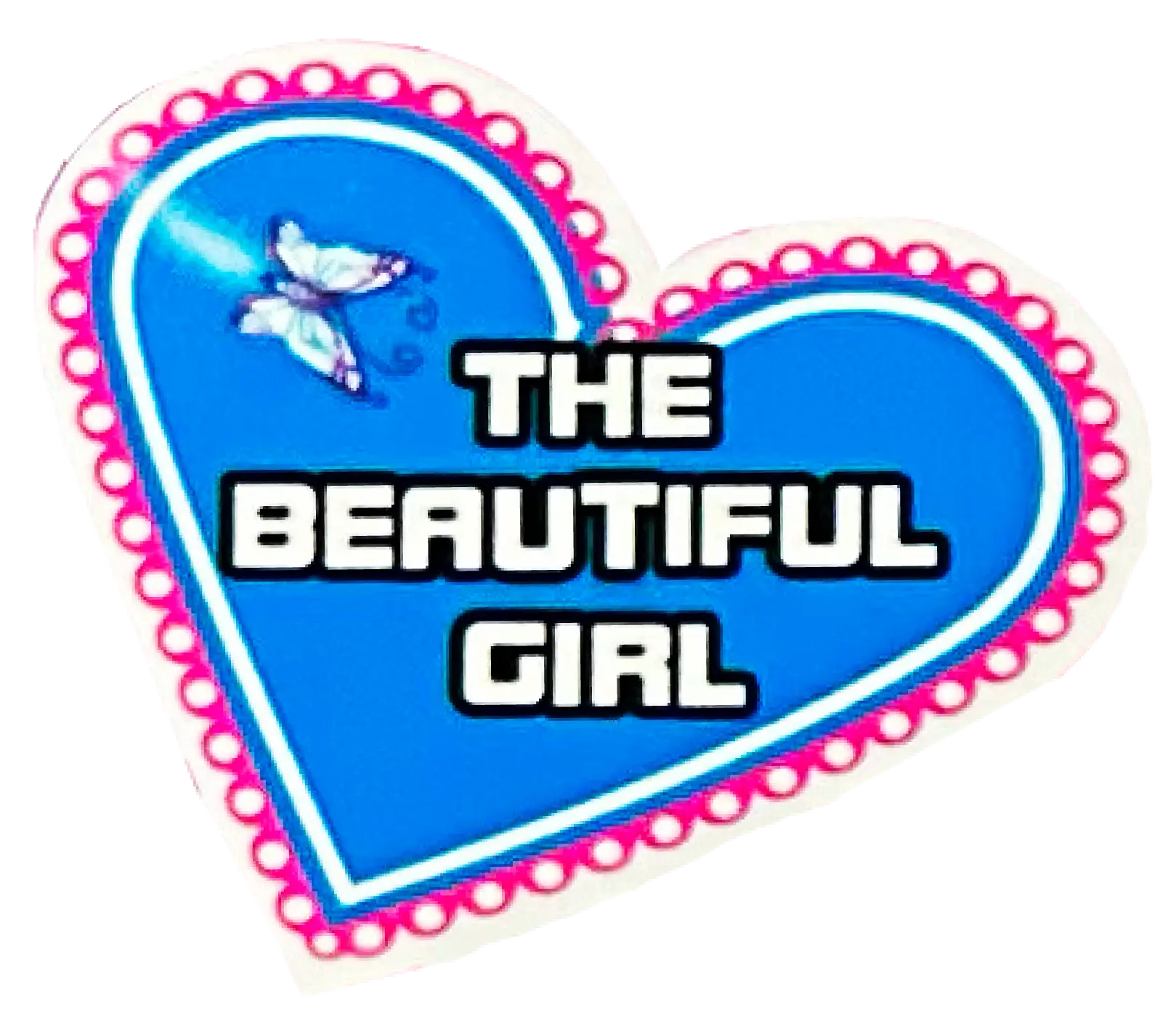Copycat! (real)
Lee Xin Ru, Jolynn

Copycat! (real) seeks to set aside the illicit nature of counterfeiting as a practice and illuminates a novel approach to reinterpreting the complex role of counterfeit works prevalent in informal markets. Counterfeit culture refers to the phenomenon where knock-off designs mimic established brands through playful font distortions, nonsensical copywriting, and intentional grammatical errors to subtly mock the original while avoiding direct plagiarism. Counterfeit adaptations often develop a unique appeal, undergoing continual transformations and tweaks to its identity to the point that it evolves into its own ‘original’, and even enhancing the allure of the original product they imitate. Through an in-depth deconstruction and analysis of unusual modifications, visual cues, and expressions evident in the branding designs of counterfeit toys, Jolynn aims to spark a nuanced conversation about counterfeiting as a 'productive' practice.
What are some of the interesting things that you’ve seen in these designs for counterfeit toys?
They try to fill up the empty spaces in their designs, but because they are not legit, they don't have the actual licensing or even words to describe it. And especially because they are maybe made in China, they have to be translated and a lot of things get mistranslated. They turn out into very funny, unintentional funny little things.
They turn out into very funny, unintentional funny little things.
And they try to mimic the original character, like Peppa Pig, Thomas the Train. There’s a lot of awkward phrasing as well. I realised, they like the idea of childhood a lot. They try to sell the toy as if it’s the best toy you can buy for your child to have a happy childhood. “Essential household playset”, “Improve your aesthetic ability for children”, especially dress up games. “Kids can find their own way to be stylish". I think the baby one is the funniest. “Baby loves to crawl and explore a whole new world. Say dad, comma mama.”
like Peppa Pig, Thomas the Train. There’s a lot of awkward phrasing as well. I realised, they like the idea of childhood a lot. They try to sell the toy as if it’s the best toy you can buy for your child to have a happy childhood. “Essential household playset”, “Improve your aesthetic ability for children”, especially dress up games. “Kids can find their own way to be stylish". I think the baby one is the funniest. “Baby loves to crawl and explore a whole new world. Say dad, comma mama.”
Even though there's a lot of issues regarding plagiarism and copying, you mentioned that it could be an alternative design practice or even ‘productive’. Could you elaborate on this? How can we learn from counterfeit design and counterfeit culture?
Once you say the word counterfeit, it has many negative connotations — fake, dupe, made in China. But even though they are fake, I feel like we can still learn a lot from them because of the way that they generate ideas, which I find quite productive in a sense.
I researched a lot about this culture called shanzhai. There's this very big place in China called Shenzhen. And they are very known for counterfeit goods like iPhone, Samsung, Nokia. I think for them, it's like a Chinese culture. It's called open source. Their way of thinking is that everybody progresses together. It's not like, oh, this is my idea, I'm gonna progress on my own. And I think that this is maybe something that we can take away from, because different people are able to add on to the same idea. For example, iPhones. They're expensive, nobody's able to get it. Maybe some people want to modify how an iPhone works, or be able to change its battery but actual Apple products don't allow you to do so. However, in China, they are able to modify, find a way to do things. And then, they actually share all of these blueprints online.
Oh, for real? They really take open source literally.
Literally, yeah. That's why a lot of people suffer a lot though, because it's obviously illegal to do this kind of thing. I found this quote very interesting: “In the West they call it theft, but over here it's called sharing.” So it's a very Chinese culture thing to do. I think it's a difference in culture, I guess. Even for me as someone who's Chinese, I didn't really see this perspective. And I think it's also because we're in a design school. Your works are your works. It's very hard to see, especially from a designer's point of view. But when I look at them, how they describe it through tech, I'm like, yeah, actually that does make sense. Maybe in a way we could all progress together and learn from it, but obviously in a respectful manner instead of riding off the original brand. It’s not justified despite their very innovative ideas. But I think this is something that maybe we can bring into our works.
See Souvenir City
See Folia Imprints,Garbage Playtime!, and Visualising Censorship
See Creativity as a Commodity, Ready Made, and The Dish is Your Canvas